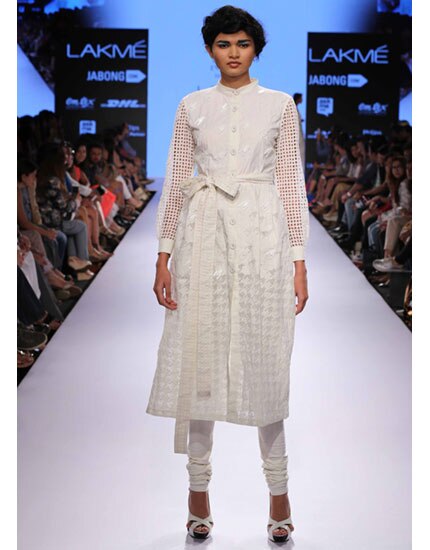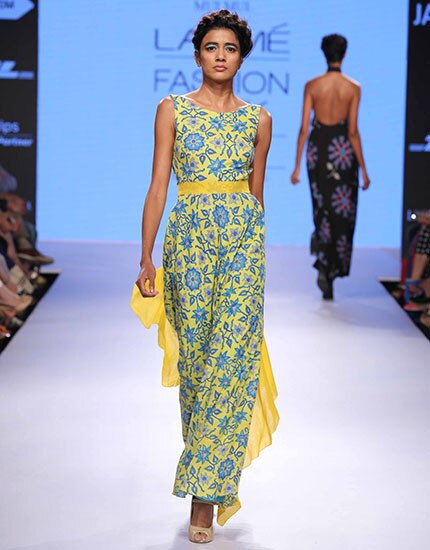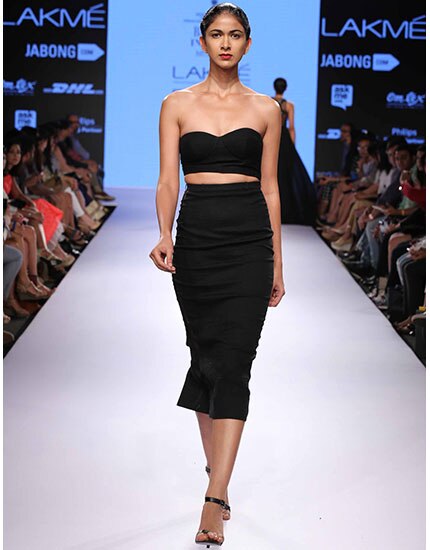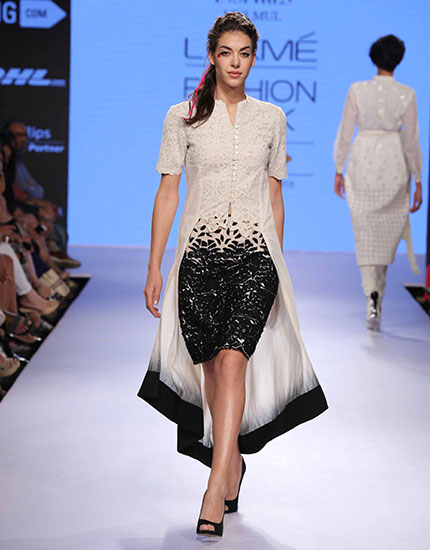
Dear Fashionistas, while you follow and track hot trends from the runways of Lakmé Fashion Week, here is an interesting story on just why trends are outdated! Or better still, why outdated is in this season. Confused? Read on…

Let’s start with Fashion Historian James Laver’s theory on the complex cycle of fashion trends. Back in1937, Laver drew up a timeline to track the cycle of fashion change and called it the 'Laver’s Law'! According to him, a trend takes years to be recognized and appreciated. So if you wear something 20 years after it was in fashion it is probably ridiculous. But wear something 50 years after it was in fashion and it is quaint, 70 years later it becomes charming and after 150 years on, beautiful! This is how we think Harper's Bazaar’s Mulmul project on Day 2 of Lakmé Fashion Week drew from the Laver’s law.

Mulmul, or muslin, which is finely hand-spun cotton yarn, soft against the skin and ideal for hot weather was India’s favourite fabric back in the pre-independence era. Introduced to England by the East India Company, the humble fabric later lost popularity in India to western fashion trends and foreign fabrics that started flooding the scene. While Mulmul never really seized to exist, it was eclipsed to the confines of the ‘Jholawala Journalist’ brand of dressing.

More recently though, Mulmul has won hearts again and designers are now beginning to realize its versatility in terms of design. And today as we know it, the brilliance of the fabric is creating waves on the runways. As part of the Harper's Bazaar inspired Mulmul threads project, for the Indian Textiles day, eight bright designers stepped out with their bold designs, exquisite cutwork complimenting this gentle fabric! These designers aced the use of Mulmul into modern day silhouettes and presented their many interpretations of it.

While Siddartha Tytler set the party wear trend of the season by quilting, pin tucking, crystallising and laser cutting to give a contemporary flavour to Mulmul resort wear, Anand Bhushan’s all-white collection turned Mulmul into an urban offering with contemporary treatment. Sailex gave the traditional fabric his signature treatment turning it into glam evening wear possibilities. Hemant and Nanda incorporated Indian prints over western outfits and with that Mulmul finally met its design match on the runways of Lakmé Fashion Week in eight unique styles. Other designers who worked their magic on Mulmul included Anupama Dayal, Dev R Nil, Raakesh Agarwal, Rabani & Rakha.

Clearly, once considered reminiscences of Victorian India, Mulmul is now the current fashion statement. This summer, therefore is a good time to mull over Mulmul and embrace the comforts of home spun fabrics. Ladies, go ahead and make a sensuous yet sensible wardrobe statement this Indian summer!
















 Privacy Notice
Privacy Notice
Written by Khubi Amin Ahmed on 20th Mar 2015